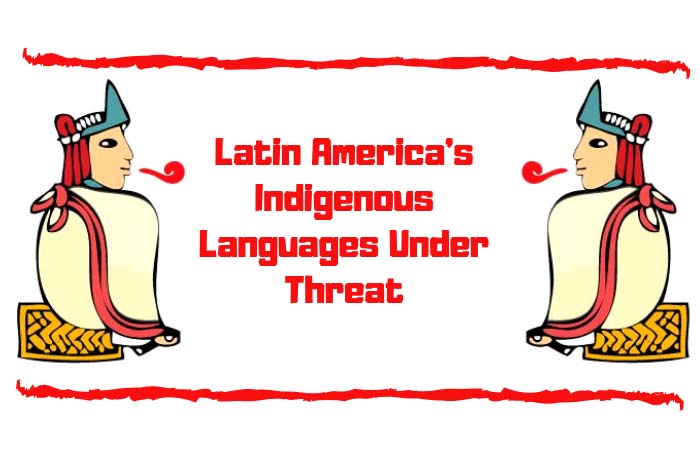Latin America is one of the most linguistically diverse places on the planet but like so many other places around the world, vast swathes of its indigenous languages are under threat of extinction by global languages like Spanish and Portuguese. Brazil alone risks losing a third of its nearly 200 languages by 2030. Meanwhile, in Mexico, almost two-thirds of its 68 languages are at critical risk of extinction, a trend seen across Latin America.
This creeping extinction threatens to erase thousands of years of history through discrimination, forced displacement, and the rise of technology that sidelines these indigenous languages. With 43% of the world’s languages being endangered and one-fifth of Latin America’s indigenous population already having lost their native tongues, UNESCO has declared 2019 the Year of Indigenous Languages to raise awareness of their importance to human heritage.
Despite some success stories, like Nahuatl, Quechua and Guarani, many indigenous languages face difficulties.
After being called pinches indios (damn Indians) by her schoolmates, a young speaker of the Mexican indigenous language of Kumiai, Josefina Meza, described how she thought her fellow pupils were trying to be her friend. Until she understood what they were saying. The abuse of those who spoke indigenous languages like Kumiai led to people starting to avoid speaking it and today, decades after this story, only 381 speak it.
Stories like this can be found throughout Latin America, leading to accusations that not enough has been done to protect these indigenous languages and their immeasurable value to human heritage. Shame or fear of speaking a language through discrimination is just one of the many tools used in linguicide; political ignorance is also often to blame. “Our languages don’t die, they are murdered,” announces Mexican Mixe speaker Yasnaya Aguilar to the Mexican Congress as she blames discriminatory education, health and justice systems for the threat to languages like hers.
Even in indigenous languages that are relatively widely spoken like Quechua, simple oversights can potentially endanger them. In 1996, the former Peruvian congressman Jose Linares was involved in a program to implement new technologies in 12 schools. The problem, however, was that the programming language used, Logo, was only in Spanish while one of the schools was majority Quechua. Determined for the children to learn in their native language, Linares worked with a team to translate it into Quechua, an example of a modern initiative that helps languages to survive. Since then, he has created a new Quechua dictionary with new scientific and technological terms that once made such technology limited to the Spanish language.
Through a mix of historical and legal discrimination, abolition and failure to adapt to the modern world, languages die. Latin America has been a linguistic battleground for centuries, and since the Spanish and Portuguese conquests, the linguistic scenery changed forever with major languages like Nahuatl and Quechua even taking a back seat to the new official languages. The languages were even officially banned in 1770 by Carlos III, the King of Spain. Despite this, some 600 survived, albeit with many severely under threat.
Since the Portuguese conquest, more than 1,000 languages have disappeared in Brazil, where indigenous language rights were only relatively recently recognized in 1988, leading to efforts being made to document and preserve these endangered languages. Although there may be recognition of one’s right to speak an indigenous language, it is still difficult, nigh on impossible with the rise of globalization, to actually entirely live one’s life in it.
Despite the critical situations facing many languages in Latin America and around the world, globalization and the rise of technology can actually be a tool to help keep languages alive. Take the Irish and Welsh languages for example, which less than a century ago many were predicting would die out. Today, with the help of governments, technological adaptation and apps like Duolingo, people from all over the world have taken an interest in their languages. With this proven potential for success, hopefully the same can be done to help preserve the hundreds of threatened languages in Latin America and share their stories with humankind.




